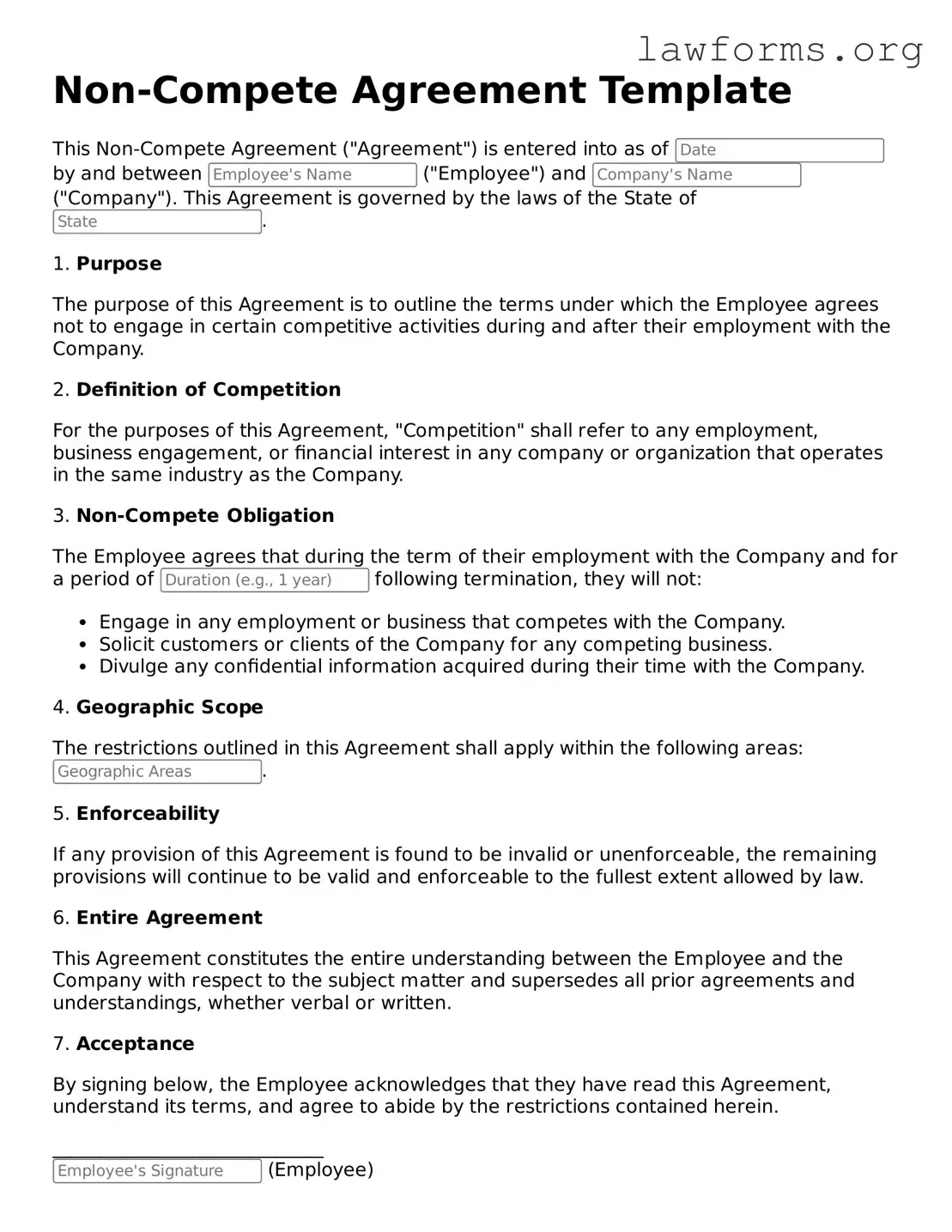Valid Non-compete Agreement Form
A Non-compete Agreement is a legal contract that restricts an individual from engaging in activities that compete with their employer for a specified period after leaving the job. This form helps protect a company's confidential information and business interests. To ensure clarity and enforceability, it is essential to fill out the Non-compete Agreement accurately.
Ready to protect your business interests? Fill out the form by clicking the button below.
Customize Document Online
